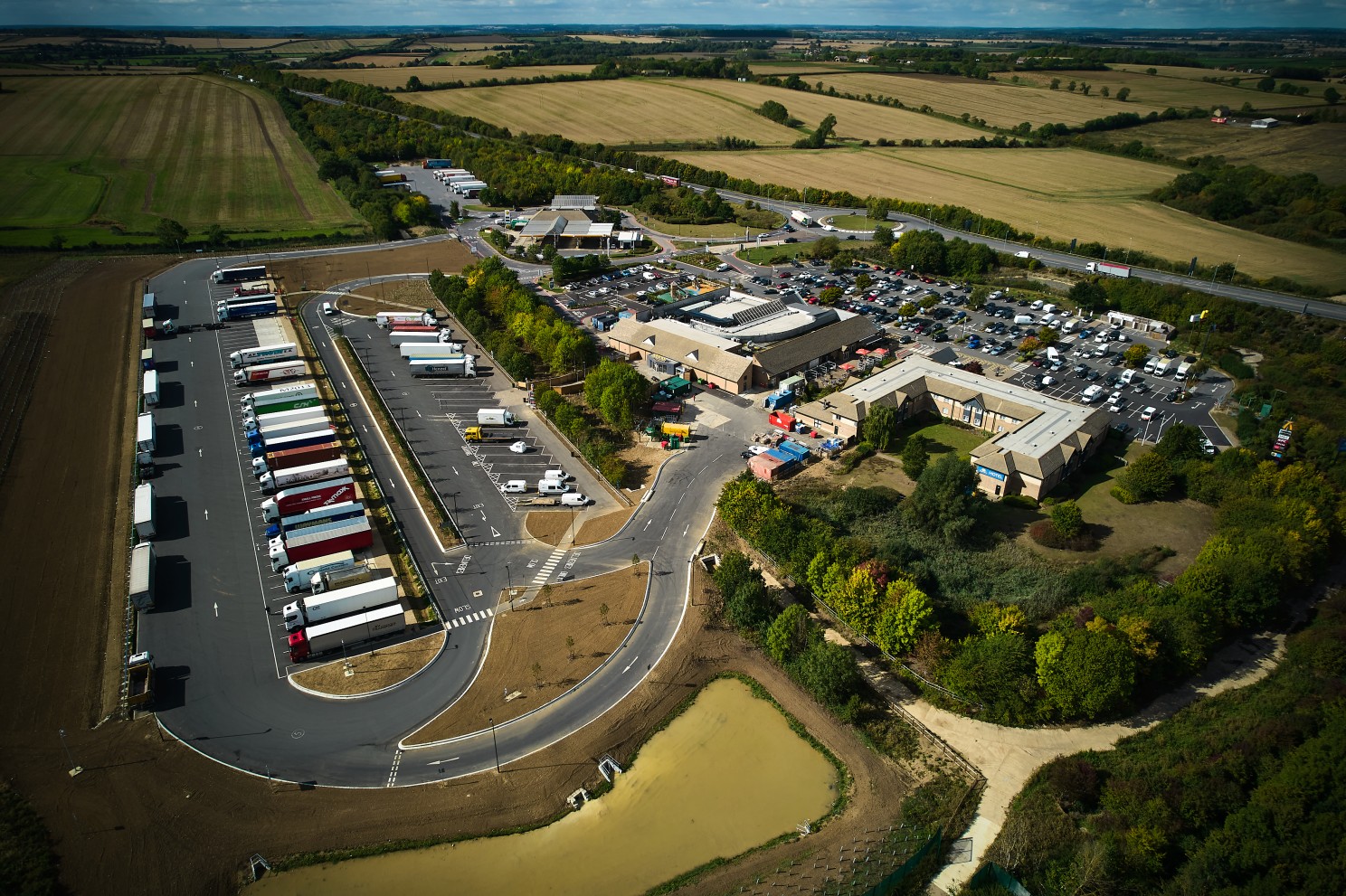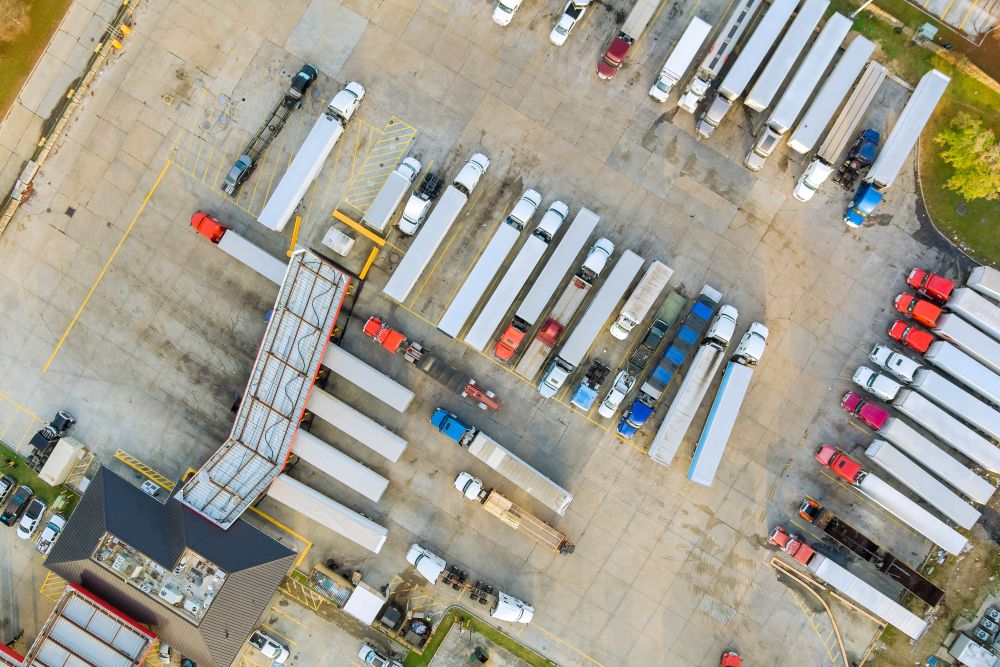
Josh Cousens
Eine strategische Partnerschaft: SNAP und Extra's Ansatz für Lkw-Parkplätze
Erstellt: 01.08.2024
•
Aktualisiert: 13.08.2024
Direktor Ross Mendenhall erklärt, wie SNAP der Extra Motorway Service Area (MSA) geholfen hat, das Umsatzwachstum in ihrem gesamten Netz um bis zu 8 % jährlich zu steigern, seit wir 2011 mit der Zusammenarbeit begonnen haben.
"Ein entscheidender Vorteil für uns ist, dass sich der SNAP-Kundenstamm ständig erweitert und wir so jährlich 30.000 zusätzliche potenzielle Kunden erreichen können", sagt Ross Mendenhall, der SNAP nutzt, um das Lkw-Parkgeschäft von Extra zu optimieren.
Ross erklärt seine Rolle bei Extra: "Ich beaufsichtige unser Netzwerk von acht MSAs in ganz England und sorge dafür, dass wir das beste Arbeitsumfeld und die besten Prozesse haben, die es uns ermöglichen, maximale Kundenzufriedenheit zu erreichen, und arbeite mit unserem CEO zusammen, um sicherzustellen, dass wir uns auf unsere Wachstumsambitionen konzentrieren.
"Ich arbeite auch eng mit unseren Lieferanten und Markenmietern zusammen, um sicherzustellen, dass wir allen Besuchern unserer MSAs das bestmögliche Erlebnis bieten."
Extra Autobahnraststätten
Nach der Eröffnung des ersten Standorts in Cambridge im Jahr 2000 ist Extra heute einer der größten Autobahndienstleister im Vereinigten Königreich. In der jüngsten Umfrage von Transport Focus über die Nutzer von Autobahndiensten wurde Extra zur Nummer eins in Sachen Kundenzufriedenheit im Vereinigten Königreich gewählt.
Ross sagt: "Im Mittelpunkt unseres Unternehmensethos steht die Verpflichtung, die "Extrameile" zu gehen, um allen unseren Besuchern großartige Erlebnisse zu bieten.
"Wir sind besonders stolz darauf, dass wir eine große Auswahl an einigen der beliebtesten Lebensmittel- und Getränkemarken Großbritanniens, malerische Außenbereiche mit Hundeauslaufzonen und Kinderspielplätzen sowie sichere, saubere und hochwertige Einrichtungen für alle anbieten können.
Im Jahr 2023 gab es 260.066 SNAP-Parkvorgänge in Extra-Autobahnraststätten.

SNAP eingeben
Ross, der seit 2011 mit SNAP zusammenarbeitet, erklärt, wie die Partnerschaft Extra geholfen hat, seinen Lkw-Parkservice auszubauen. "SNAP hilft uns dabei, unsere wichtigsten Dienstleistungen für Lkw-Fahrer und -Flotten zu kommunizieren und unsere Park-, Tank- und Waschmöglichkeiten sichtbar zu machen.
"Wir sind bestrebt, die Zufriedenheit der Lkw-Fahrer, die bei uns halten, zu erhöhen, und die Zugehörigkeit zum SNAP-Netzwerk ermöglicht uns genau das. Durch die App können wir unsere Partnerschaften und den organischen Umsatz ausbauen, indem wir den Kunden ein effizientes Instrument an die Hand geben, mit dem sie mehr über unsere Einrichtungen erfahren können, auch darüber, wie wir ihren Aufenthalt angenehm, entspannend und sicher gestalten können."
Wie verlief die Einrichtung?
Wir wollten herausfinden, ob es in der Anfangsphase der Beziehung irgendwelche Komplikationen gab.
Ross sagt: "Es war sehr einfach. Das SNAP-Team stand uns bei allen Fragen zur Seite und hatte auch nach der Einrichtung ein offenes Ohr für unser Feedback, wie das System weiter verbessert werden könnte, um unseren Bedürfnissen besser gerecht zu werden."
Wachstum der Einnahmen
Wir haben Ross gefragt, ob SNAP Extra geholfen hat, seine Einnahmen zu steigern:
"Unsere Partnerschaft mit SNAP hat uns geholfen, unser Umsatzwachstum stetig zu steigern, das im Jahresvergleich um 8 % gestiegen ist, während das Transaktionswachstum um 2 % zunahm.
"Unsere Dienste in Cambridge und Peterborough haben mit 11% bzw. 12% die größte Verbesserung gegenüber dem Vorjahr erfahren. Außerdem sind unsere Dienste in Peterborough, Leeds und Cambridge jetzt alle zu mehr als 100 % ausgelastet.

SNAP Zugang und Sicherheit
Nach mehrjähriger erfolgreicher Zusammenarbeit fragte Extra 2018 bei uns an, ob wir sie bei der Verbesserung ihrer Sicherheitseinrichtungen unterstützen könnten.
"Wir haben unsere Partnerschaft mit SNAP im Laufe der Jahre weiter ausgebaut und in CCTV- und ANPR-Technologie investiert, um maximale Sicherheit zu gewährleisten.
"Die Installation von Sicherheitstechnologien an allen acht Standorten hat uns geholfen, unsere Einnahmen zu schützen und sicherzustellen, dass jedes Fahrzeug für die korrekte Dauer seines Aufenthalts bezahlt wird.
"Die Zusammenarbeit mit SNAP Access & Security hat sich fast unmittelbar ausgewirkt - seit der Inbetriebnahme konnten wir einen Anstieg der Einnahmen aus dem Parkgeschäft um rund 20 % verzeichnen.
"Da die Sicherheit eine der Prioritäten für LKW-Fahrer ist, wenn sie für längere Zeit anhalten, freuen wir uns, ihnen den Aufenthalt angenehmer zu gestalten, indem wir ihnen versichern, dass wir umfassende Maßnahmen ergriffen haben, um das Risiko von Diebstählen zu minimieren.
"Der Zugriff auf die Business Intelligence Dashboards von SNAP bedeutet auch, dass wir die Daten in Echtzeit überwachen können, was uns ermöglicht, die bestmögliche Benutzererfahrung zu bieten", sagt Ross.
Das beste Stück
Zum Abschluss des Interviews wollten wir von Ross wissen, was seiner Meinung nach das Beste an der Arbeit mit SNAP war:
"Ein entscheidender Erfolg für uns ist der Einfluss auf die Effizienz des Personals. Die Einführung des ANPR-Systems in Kombination mit den Zahlungsterminals ermöglicht den Fahrern eine Selbstbedienungsoption, was bedeutet, dass sich das Personal stattdessen auf andere wichtige Aufgaben wie Reinigung, Wartung und Kundendienst konzentrieren kann.
"Die Flexibilität, die die Zahlungsterminals bieten, ist ebenfalls ein großer Vorteil: Die Fahrer können die Zahlungsterminals in 15 Sprachen nutzen, was die Kundenerfahrung verbessert und Probleme mit Sprachbarrieren reduziert."
Wenn Sie mehr über die Extra-Servicepartner des SNAP-Netzes erfahren möchten, besuchen Sie noch heute die SNAP-Karte . Wenn Sie Lkw-Parkplätze anbieten und dem SNAP-Netzwerk beitreten möchten, finden Sie weitere Informationen hier.



